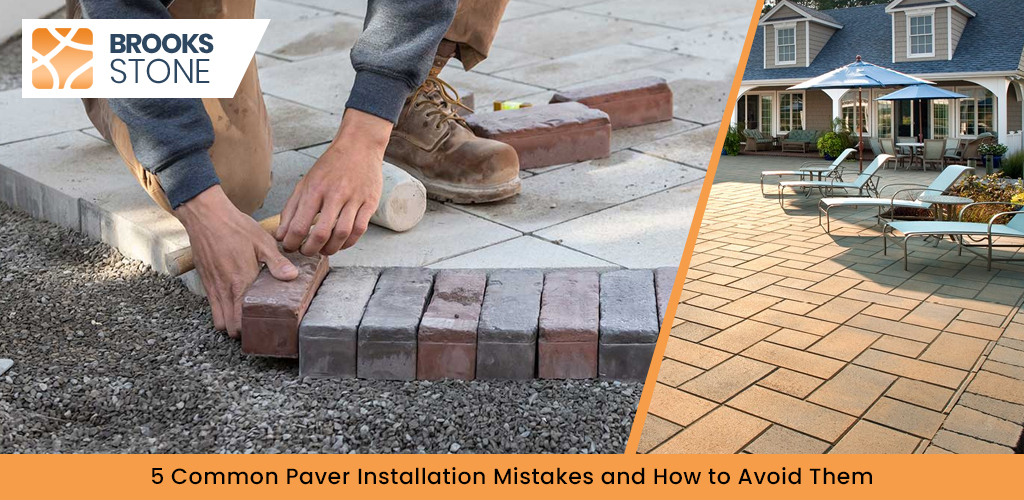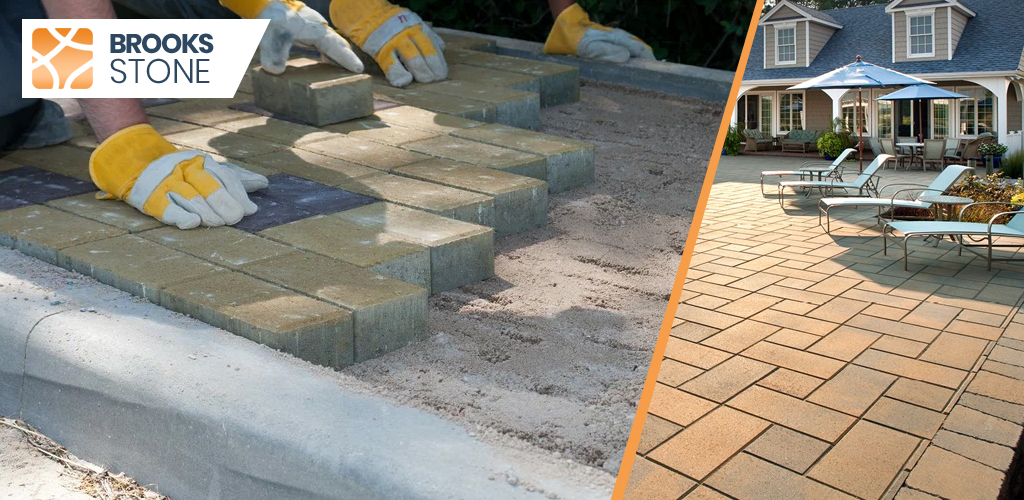5 Common Paver Installation Mistakes and How to Avoid Them
The use of pavers has become a great option to enhance the beauty of the house. Nowadays many people are installing pavers in their home courtyards and gardens. Paver installation is an important main job that requires special attention. Pavers installed properly not only enhance the beauty of the house but also last for a long time. But sometimes people make some small mistakes that cause pavers to deteriorate quickly. Let’s know about these mistakes and understand how they can be prevented.

1. Mistakes in foundation preparation
- Poor digging: It is very important to take care of the right depth while digging the foundation. Many times, people dig to a lesser depth in a hurry. This weakens the soil under the pavers and they break down quickly. Digging to the right depth keeps the pavers firmly frozen. It is also very important to check the soil of the ground. Rocky or weak soils need extra strength. The depth of excavation should be decided according to the weather. Digging deeper should be done during the rainy season. Take special care of the drainage of water and dig in the direction of the slope.
- Wrong stuffing: The choice of material to be filled into the foundation after digging should be correct. Sometimes people use cheap and poor-quality stuffing material. This weakens the base underneath the pavers and causes them to sink. The size of gravel used in stuffing should be small. Thick gravel leaves empty space under the pavers. Every layer should be well compacted while stuffing. The mixture of sand and cement should be in the right proportion. After stuffing, sprinkle water and let it set. Do not start further work in haste.
2. Wrong selection of pavers
- Size mistake: Different sizes of pavers are available for every location. Many times, people do not choose the right size according to the place. Putting big pavers in a small space and small pavers in a large space does not look good. Choose larger size pavers for the garden which are stronger. Medium sized pavers are good in the parking area. Small pavers are a better option for walking paths. Keep in mind the size as well as the pattern. The design of the pavers should be tailored to the place.
- Compromise in quality: In the process of buying cheap pavers, people often compromise with quality. Poor quality pavers break quickly and their color also fades. When buying pavers, check their sturdiness. Good company pavers have uniform color depth. The edges of the pavers should be clean and cut straight. Try dropping pavers to the ground, underestimating their quality if broken. Choose pavers with the ability to withstand weather changes.
3. Wrong laying
- Level problem: Water gets accumulated due to not taking care of the level while laying pavers. Many times, workers install pavers without checking the level. This causes water in the rain and it is also difficult to walk. Special equipment should be used to check the level. Keep checking the level every two meters. Keep a slight slope for the drainage of water. The direction of the slope should be towards the outside of the house. Make a straight line with the rope before laying. Pay special attention to the corners as water begins to accumulate from there.
- Not taking care of the gap: It is important to keep the right gap between the pavers. Some people do not take care of this and put the pavers very close. This causes the pavers to swell and break in the heat. The gap should be well filled with sand. Decide the width of the gap according to the size of the pavers. Keep more gaps between larger pavers. Less gap is sufficient in smaller pavers. Use fine sand to fill the gap. Thick sand does not fill the gap properly. Mix cement so that the sand does not flow away in the rain.
4. Edge mistakes
- Weak edge support: Not providing strong support on the edges of the pavers causes them to slide outwards. Many times, people forget to apply edge support. This spoils the whole pattern. Use special edge stones for edge support. Fix the edge stone well with cement. Put double edge support on the corner. The height of the edge stone should be equal to the pavers. Provide concrete support behind the edge stone. Waterproofing the edge stone to protect it from water.
- Wrong cutting: It is very important to cut the pavers correctly at the edges. Cutting pavers without the right tools causes them to break and look bad. Use a diamond cutter for cutting. Take the correct measurements and mark before cutting. Do not cut the entire paver at once. Cut it slowly. Keep spraying water at the time of cutting. Clean the edges of the cut paver. Do not use broken pavers.

5. Negligence in sealing
- Sealer deficiency: Not applying sealer on pavers causes them to deteriorate quickly. Some people do not install sealers to save money. This causes dust and water to penetrate the pavers. Clean the pavers thoroughly before applying the sealer. Wash off dust and soil with water. Allow the pavers to dry completely. Apply the sealer with a brush or roller. Apply thin layer at a time. Apply the sealer in two-three layers. Give each layer time to dry.
- Selection of wrong sealer: There are different sealers for each type of pavers. Using the wrong sealer without knowledge damages the pavers. There is a separate sealer for concrete pavers. Clay pavers need another type of sealer. Use a waterproof sealer. Choose a sealer according to the climate. Check the quality of the sealer. Avoid cheap sealers as they wear out quickly.
Small mistakes in paver installation can cause major damage. So always choose good quality pavers and get them installed correctly. Take the help of an experienced mechanic and take all the necessary precautions. This will keep your pavers like new for a long time and your home will also look beautiful.
